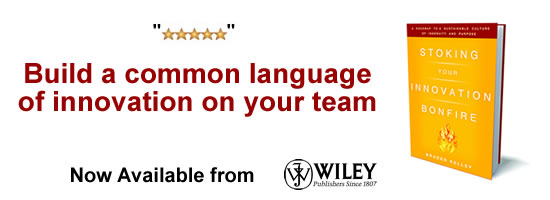No Innovation Strategy Fits Every Problem, So You Need To Work With Full Toolbox

One of the best innovation stories I’ve ever heard came to me from a senior executive at a leading tech firm. Apparently, his company won a million dollar contract to design a sensor that could detect pollutants at very small concentrations underwater. It was an unusually complex problem, so the firm set up a team of crack chip designers and they started putting their heads together.
About 45 minutes into their first working session, the marine biologist assigned to their team walked in with a bag of clams and set them on the table. Seeing the confused looks of the chip designers, he explained that clams can detect pollutants at just a few parts-per-million and when that happens, they open their shells.
As it turned out, they didn’t need a fancy chip to detect pollutants, just a simple one to alert the system to clams opening their shells. “They saved $999,000 and ate the clams for dinner,†the executive told me. That, in essence, is the value of open innovation and it can be very helpful, but it is only one tool among many. We need to learn to use the entire toolbox.
When you have a really tough problem, it often helps to expand skill domains beyond specialists in a single field. These kinds of unlikely combinations that are key to coming up with elusive breakthroughs. In fact, in a study analyzing 17.9 million scientific papers researchers found that the most highly cited work tended to be mostly rooted within a traditional field, with just a smidgen of insight taken from some unconventional place.
But imagine the task was simply to make a chip that was 30% more efficient? In that case, a marine biologist dropping clams on the table would be nothing more than a distraction. Or, say, the company needed to identify a new business model? Or what if, as is the case today, current chip technology is nearing its theoretical limits and a completely new architecture needs to be dreamed up?
In researching my book, Mapping Innovation, I found that every innovation strategy fails eventually, because innovation is, at its core, about solving problems and there are as many ways to innovate as there are different types of problems to solve. There is no one “true†path to innovation
Yet all too often, organizations act as if there is. They lock themselves into one type of strategy and say, “this is how we innovate.†It works for a while, but eventually they find themselves locked into a set of solutions that don’t fit the problems they need to solve. Essentially, become square-peg companies in a round-hole world and lose relevance.
We need to start treating innovation like other business disciplines — as a set of tools that are designed to accomplish specific objectives. Just like we wouldn’t rely on a single marketing tactic for the life of an organization, or a single source of financing, we need to build up a portfolio of innovation strategies designed for specific tasks.
It was with this in mind that I created the Innovation Matrix, the central framework featured in my book, to help leaders identify the right type strategy to solve the right type of problem.
Sustaining Innovation: Most of the time, we’re trying to get better at what we’re already doing. We want to improve existing capabilities in existing markets and we have a pretty clear idea of what problems need to be solved and what skill domains are required to solve them.
For these types of problems, conventional strategies, like strategic roadmapping, traditional R&D labs and using acquisitions to bring new resources and skill sets into the organization are usually effective. Design thinking methods, such as those championed by David Kelley, founder of the design firm IDEO and Stanford’s d.school, can also be enormously helpful.
Breakthrough Innovation: Sometimes, as was the case with the example of designing a chip that could detect pollutants underwater described above, we run into a well defined problem that’s just devilishly hard to solve. In cases like these, we need to explore unconventional skill domains, such as adding a marine biologist to a team of chip designers. Open innovation innovation strategies can be highly effective in this regard.
As Thomas Kuhn explained in the The Structure of Scientific Revolutions, we advance in specific fields by creating paradigms, which sometimes can make it very difficult to solve a problem within the domain in which it arose, but may be fairly easily resolved within the paradigm of an adjacent domain.
Disruptive Innovation: When Harvard Professor Clayton Christensen introduced the concept of disruptive innovation in his book, The Innovator’s Dilemma, it was a revelation. In his study of why good firms fail, he found that what is normally considered best practice — listening to customers, investing in continuous improvement and focusing on the bottom line — can be lethal in some situations.
In a nutshell, what he discovered is that when the basis of competition changes, because of technological shifts or other changes in the marketplace, companies can find themselves getting better and better at things people want less and less. When that happens, innovating your products won’t help, you have to innovate your business model.
More recently, Steve Blank developed lean startup methods and Alex Osterwalder created tools like the business model canvas and value proposition canvas. These are all essential assets for anyone who finds themselves in the situation Christensen described and are proving to effective in a wide variety of contexts.
Basic Research: Pathbreaking innovations never arrive fully formed. They always begin with the discovery of some new phenomenon. No one could guess how Einstein’s discoveries would shape the world or that Alan Turing’s universal computer would someday become a real thing. As the astrophysicist Neil Degrasse Tyson said when asked about the impact of a major discovery, “I don’t know, but we’ll probably tax it.â€
Some large enterprises, like IBM and Procter & Gamble, have the resources to invest in labs to pursue basic research. Others, like Experian Data Labs encourage researchers and engineers to go to conferences and hold internal seminars on what they learn. Google invites about 30 top researchers to spend a sabbatical year at the company and funds 250 academic projects annually.
Yet one of the best kept secrets is how even small and medium sized enterprises can access world class research. The federal government funds a variety of programs, such as the Hollings Manufacturing Extension Partnership, a series of manufacturing hubs to help develop advanced technologies and the Nano Design Works. Local universities, which have a wealth of scientific talent, can also be a valuable resource.
The truth is that every innovation strategy fails eventually, because there are always new problems to solve. That’s why it’s important not to lock yourself into a single approach, but to apply the solution that best fits the problem.
An earlier version of this article first appeared in Harvard Business Review
Wait! Before you go…
Choose how you want the latest innovation content delivered to you:
- Daily — RSS Feed — Email — Twitter — Facebook — Linkedin Today
- Weekly — Email Newsletter — Free Magazine — Linkedin Group
 Greg Satell is a popular speaker and consultant. His first book, Mapping Innovation: A Playbook for Navigating a Disruptive Age, was selected as one of the best business books in 2017. Follow his blog at Digital Tonto or on Twitter @Digital Tonto.
Greg Satell is a popular speaker and consultant. His first book, Mapping Innovation: A Playbook for Navigating a Disruptive Age, was selected as one of the best business books in 2017. Follow his blog at Digital Tonto or on Twitter @Digital Tonto.
NEVER MISS ANOTHER NEWSLETTER!
LATEST BLOGS
Four ways you can ensure employees take accountability for their work
One of the most important driving factors for any successful business is a high-performing team. Having people working for you…
Read MoreWhat is digital upskilling and why is it important?
Photo by Annie Spratt on Unsplash In a world of business that never stands…
Read More



